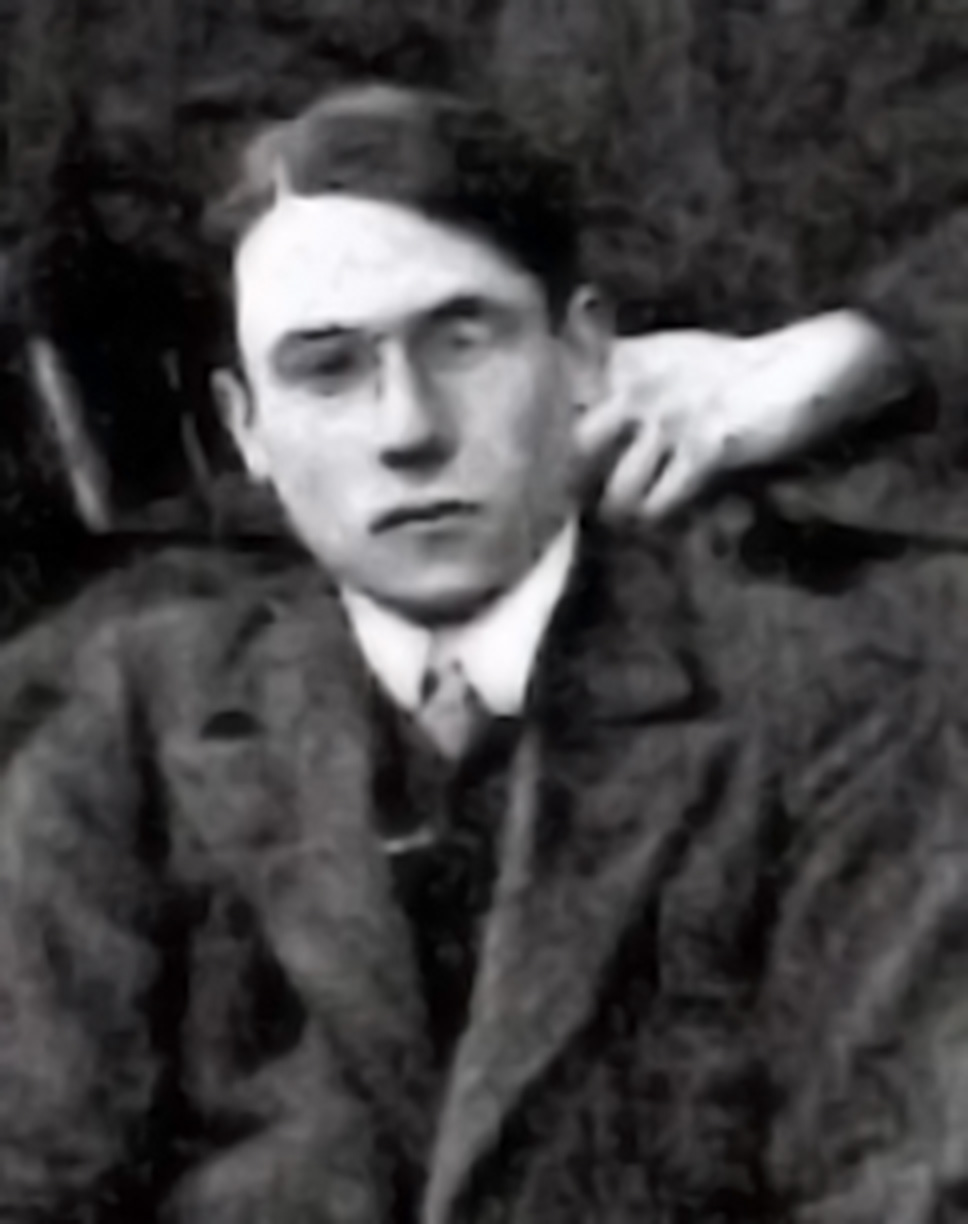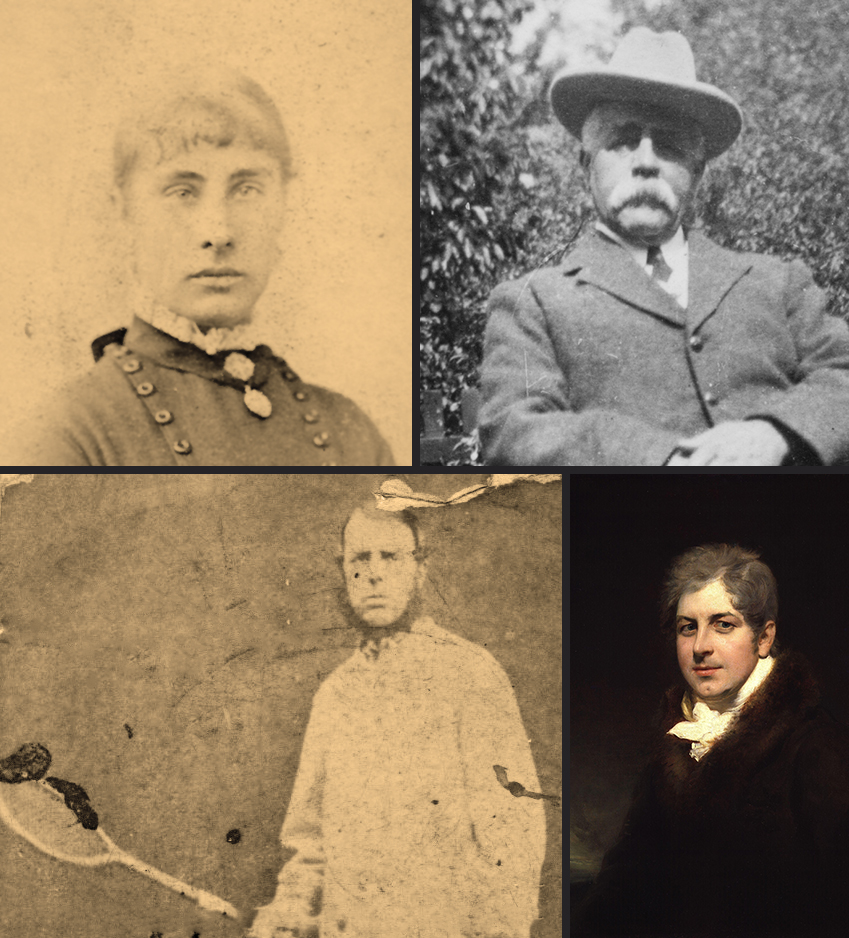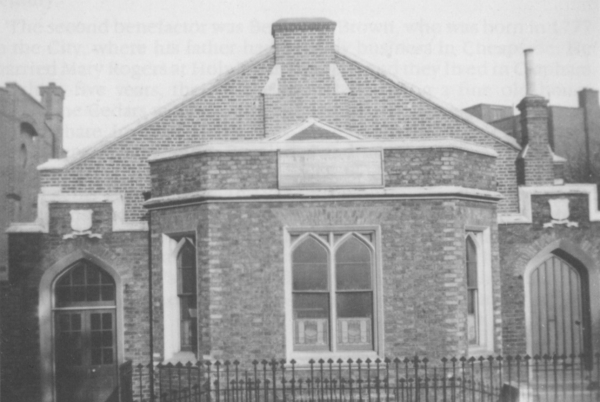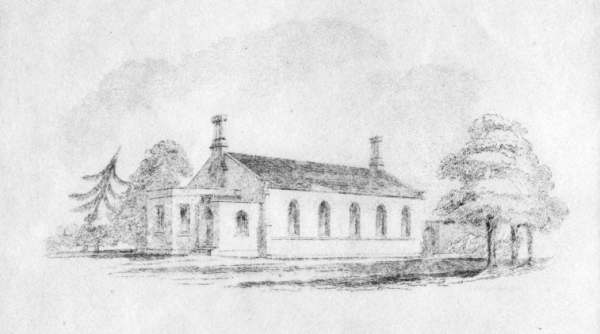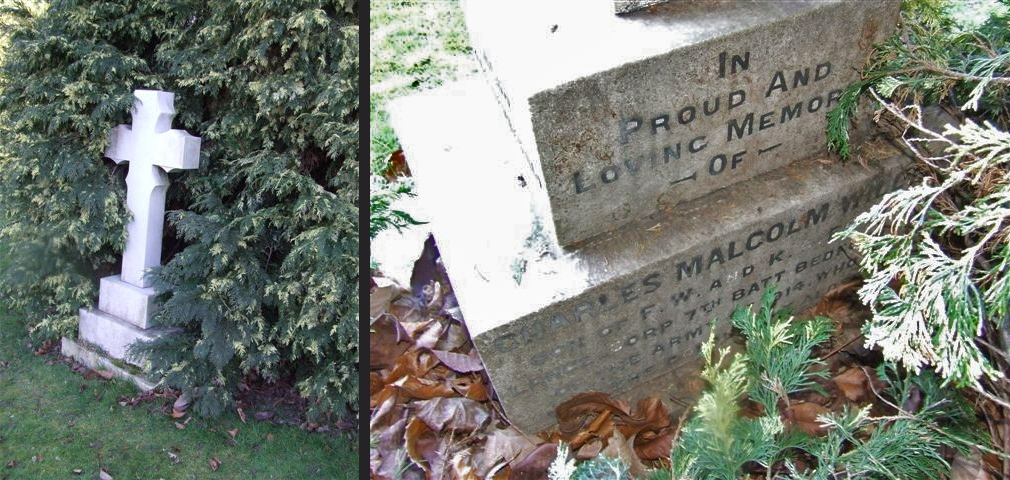Charles Malcolm William Erwood
4th June 1889 – 17th December 1914
Lance Corporal Charles Malcolm William Erwood, Regimental Number 15145, of the 7th Battalion Bedford Regiment died on 17th December 1914 at Cambridge Hospital, Aldershot, of pneumonia. He is buried in Woolwich Old Cemetery. Charles was the first student from Winchester Training College to die while in active service in the First World War.
The Erwoods
There are some rather colourful characters in Charles’ family tree. Great-great-great-uncle Robert Elliston was a watchmaker in Bloomsbury who was ‘a man of indolent habits and low pursuits, and the charge of education of his son devolved upon his brother, William Elliston, LLD., master of Sidney College [sic], Cambridge.’ This son, great-great-uncle to Charles, was the famous impresario Robert William Elliston (7th April 1774 to 15th July 1831) who ran away from home at 17 to become an actor. It is recorded he played by command before George III (mad King George) at Windsor and later, when performing before him again, at Weymouth, ‘by playing on the violin he awoke the king, who in the afternoon had retired into the royal box and fallen asleep.’ He pursued a somewhat turbulent career in acting and theatre management—which included management of Drury Lane, duelling and descent from £30,000 capital to bankruptcy. He ‘acquired habits of gambling and dissipation and his weakness in the presence of temptation led him into terrible irregularities; his animal spirits and habits of intoxication combined made him the hero of the most preposterous adventures.’ However, it is said of him that ‘few have exhibited more diversified talent or a more perplexing individuality. In the main he was an honest, well-meaning man.’
We shall start the Erwood story proper with his grandfather, Francis Elliston Erwood. Born on 17th March, 1824 in Marylebone, he followed an unusual career in sport. The 1851 Census records his profession as a Racket Marker, staying as a visitor in the house of John Bracher who was a Tennis Marker. Today we would use the term umpire rather than marker, although the traditional game of rackets (sometimes spelled racquets today, the game which gave rise to squash and should not be confused with racquetball) has retained the original term. We know that Francis was also Marker (scorer) at Lord’s cricket ground and coached rackets at the Royal Garrison Artillery. He didn’t only mark but he played—well.
Competing in the first closed court rackets world championship in 1860, he won both the title and a handsome £400 prize. The final was over two legs, the first at the Royal Artillery Court, Woolwich and the second at the Eglinton Arms, Maudlin Street, Bristol.1 In both matches he defeated open court champion professional John Charles Mitchell.
Francis continued his successful playing and marking career, combining it with ‘racket bat [sic] and ball-making’. His playing career ended when he was struck in the face by a ball while playing an RGA officer, leaving him with a broken cheekbone, damaged left eye and facial disfigurement. He had however, passed his skill and enthusiasm on to his son.
Francis William (Dec 1856 – 24th May 1929), Charles’ father, continued in the sport and is recorded in Census records as a self-employed Racquet Maker (1881, 1891, 1901) before being listed as a Professional Racquet Player, Royal Artillery Garrison (1911). As 54 years of age is old to be starting a professional sports career, it is likely that this had been his alternative employment for some years, maybe even since the death of his father in 1878 when he was 22. A third generation was drawn into the sport when many years later Francis’s son, Francis Charles, said that he strove for inclusion in that famous ‘family of racket players who were all very pretty players and who numbered among themselves one Champion of England’.
Photo to the left; The Erwood Family. Clockwise: Mother Kate, father Francis William, grandfather Francis Elliston and great-great-uncle Robert William Elliston
The Next Generation: Teachers
Francis W. married Kate Anson Shipman of Plumstead on August 2nd, 1882 in Woolwich and settled to married life in Plumstead. In short succession were born Francis (Frank) Charles Elliston (31st May, 1883), Kathleen Elsie (22nd June, 1885), Herbert John (24th July, 1887), Charles Malcolm William (4th June, 1889) and Edwin George (5th September, 1892).
Charles’ later Winchester Training College Student Record shows that he—and presumably his siblings—attended Eglinton Road School, Shooters Hill, which lies on the southern edge of Woolwich. It is not known what links the name of the school with the Earls of Eglinton, who were central to the history of the sport of rackets.
By 1901, Frank and Kathleen had shown excellence in schoolwork and character, and had been kept on at school as Pupil Teachers—and Charles followed their example in due course. He would have been 15 years old when he began as a pupil teacher (1904) and spent two years in this position. His time would be divided between classroom responsibilities (limited by law to twenty hours per week), day-courses at a pupil teacher centre, and personal tuition under the headteacher. In early 1907, Frank sat and passed the Preliminary Examination for the Certificate—a prerequisite for applying to teacher training college. Choosing not to apply immediately, he secured an assistant teacher post at Lady Boswell’s School in Sevenoaks in 1907. One previous young member of staff at the school, William Goss Hicks (college years 1903-1905), had held an identical position at the school before going to train at Winchester Training College. One wonders if established members of teaching staff may have recommended this path to Charles.
In September 1908 Charles enrolled at Winchester Training College. His later military file indicates that he served in the Hampshire Regiment Volunteers at the college for a short time. All students were expected to join the college unit which was otherwise known as the Winchester Diocesan Training College Corps, or the 24th Rifle Corps. During the early part of his first year, the college company would be restructured and become B Company of the 4th Territorial Battalion of the Hampshire Regiment. This change would mean stricter discipline and a more professional approach. (For further details see the feature article on WTC Territorials).
Charles’ academic grades would indicate that he was an able student, taking an A-Grade in Science and B’s across the board in other subjects.
Winchester Training College documents note that Charles retained his forebears’ penchant for racket sports as he became part of the college tennis team. His name doesn’t appear in any of the football teams and the only other specific reference to him is that on a College Sports Day he was placed third in the Slow Bicycle Race. It is difficult to tell whether a low placing represents success or failure.
With his studies successfully completed and professional qualification attained, Charles returned home in 1910 and, it is thought, took up teaching for a short time near the family home before securing a teaching post at the Parochial Boys School, Macaulay Road, Clapham.
Frank and Kathleen had also undertaken their two-year teacher training and returned home to teach locally, most probably at their old pupil teacher schools.2 Herbert was living in Twickenham as a Tin Plate Worker for a poultry appliance manufacturer and Edwin was boarding in Southall as a Post Office clerk (later military records show that he was a telegrapher).
The Great War: A Call to Arms
Three of the four brothers were to see military service in the war. The common mental picture of soldiery in this conflict is of life in chaotic trenches, wading through seas of mud, or the often fatal rush over the top into withering machine gun fire. None of the Erwood brothers was to experience these.
Frank signed up for service on Tuesday, 30th November 1915 at Woolwich and was assigned to the Royal Engineers: he was a qualified draughtsman by virtue of his architectural drawing skills. His call-up came on 21st Jan 1917 to the Ordnance Survey Office and he was in active service in the British Expeditionary Force from 16th April 1917 to 10th May 1919. Frank said his war experience consisted of ‘a period as a Sapper, an Ordnance Surveyor and a fragment of an Intelligence Unit which passed the time pleasantly and safely’.
Brother Edwin signed up 10 days later at the same recruitment office and was placed on the Army Reserve list for Signal Service since he was by profession a Post Office telegraphist. He was called up on 4th April 1917 as a ‘Telegrapher, Army Reserve for Signal Service’, but found medically fit for home service only as he had undergone a nephrectomy (kidney removal). Eventually he was discharged as ‘surplus to Military requirements’ on 14th December, 1918.
Grave headstone, Woolwich Old Cemetery
Charles’ military service was tragically short. His Army records seem not to have survived the mass destruction of over 5 million WWI documents in the Blitz of September 1940 when the storage warehouse in Arnside Street, Walworth was hit by an incendiary bomb. Thus his Attestation (sign-up) date is not known. Lance Corporal Charles Malcolm William Erwood, 15145, of the 7th Battalion Bedford Regiment died on Thursday, 17th December 1914 at Cambridge Hospital, Aldershot, of pneumonia. He had never set foot in any theatre of war and lies in a war-grave near the family home, at Woolwich Old Cemetery. Although the grave carries a private memorial headstone, it is cared for and listed by the Commonwealth War Graves Commission.
Researcher and Author: John Vickers
Footnotes
[1] Now a private dwelling but retains the pub frontage under its subsequent name, The Seahorse, adjoins the new Bristol Children’s Hospital. The pub took its name from Eglinton Castle, Kilwinning, North Ayrshire, site of the very first covered racquet court, built before the court size was standardised. It is now the oldest surviving court in the World, as well as being the oldest indoor sports building in Scotland. In 1860 the Earl of Eglinton employed a rackets professional, John Mitchell. Mitchell owned the Bristol pub, with its own rackets court, and named it the ‘Eglinton Arms’, having been the ‘Sea Horse’ previously (It has now reverted to its original name; although it appears to be a private residence, it retains the pub frontage and name board.) It had a reputation as a centre for sporting life. It can therefore be seen why the two legs were played at these venues: home and away for each player.
[2] Nothing is known of Kathleen’s teaching history. Francis taught art. Elliston-Erwood had been trained to be an art master (the training included architectural drawing), and it was probably his facility with pen, brush and pencil which endeared him to one who was a master in the drawing of ecclesiastical plans In Woolwich he is still remembered [1968] as a teacher of art at Woolwich Central School. He also became a noted archaeologist and historian and was elected a Fellow of the Society of Antiquaries of London.
Sources
Ancestry (2018). Home page. [online] Available at: www.ancestry.co.uk [Accessed 2018] [Guy R.E. Erwood: Family portraits. Copyright unknown. Request made 2/12/2017]
British Newspaper Archive (2018). Bell’s Life in London, and Sporting Chronicle, October 26th 1878. [online] Available at: www.britishnewspaperarchive.co.uk [Accessed 2018]
Find a Grave (2018). Private Charles Malcolm William Erwood. [online] Available at https://www.findagrave.com/memorial/24762231 [Accessed 2018]
Kent Archeology.org.uk (2018). Archaeologia Cantiana Vol. 84 1969. [online] Available at https://www.kentarchaeology.org.uk/Research/Pub/ArchCant/Vol.084%20-%201969/084-01.pdf [Accessed 2018]
London County Council Staff (1920). London County Council record of service in the Great War 1914-18, Page 193. London: London County Council
Rose, M. (1981). A history of King Alfred’s College, Winchester 1840-1980. London: Phillimore
Wikipedia. (2016). Francis Elliston. [online] Available at: https://en.wikipedia.org/wiki/Francis_Erwood [Accessed 2018]
Wikipedia. (2017). Robert William Elliston. [online] Available at: https://en.wikipedia.org/wiki/Robert_William_Elliston [Accessed 2018]
Vickers, J. The University of Winchester Chapel Memorial Rail image
| University of Winchester Archive “ Hampshire Record Office | ||
| Reference code | Record | |
| 47M91W/ | P2/4 | The Wintonian 1899-1900 |
| 47M91W/ | P2/5 | The Wintonian 1901-1902 |
| 47M91W/ | P2/6 | The Wintonian 1903-1904 |
| 47M91W/ | P2/7 | The Wintonian 1904-1906 |
| 47M91W/ | P2/8 | The Wintonian 1905-1907 |
| 47M91W/ | P2/10 | The Wintonian 1908-1910 |
| 47M91W/ | P2/11 | The Wintonian 1910-1914 |
| 47M91W/ | P2/12 | The Wintonian 1920-1925 |
| 47M91W/ | D1/2 | The Student Register |
| 47M91W/ | S5//5/10 | Photograph of 5 alumni in Mesopotamia |
| 47M91W/ | Q3/6 | A Khaki Diary |
| 47M91W/ | B1/2 | Reports of Training College 1913-1914 |
| 47M91W/ | Q1/5 | Report and Balance Sheets 1904- 1949 |
| 47M91W/ | R2/5 | History of the Volunteers Company 1910 |
| 47M91W/ | L1/2 | College Rules 1920 |
| Hampshire Record Office archive | ||
| 71M88W/6 | List of Prisoners at Kut | |
| 55M81W/PJ1 | Managers’ Minute Book 1876-1903 | |
| All material referenced as 47M91W/ is the copyright of The University of Winchester. Permission to reproduce photographs and other material for this narrative has been agreed by the University and Hampshire Record Office. | ||


